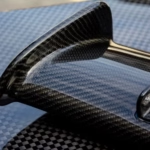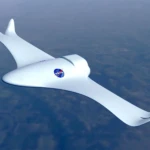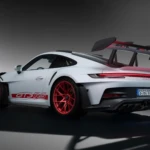CNC Steering Basics: Your Basic Guide to Precision Processing
Imagine making composites, completely symmetrical metal parts, tighter than human hair. That’s the realm of CNC Turning, a cornerstone technology in modern manufacturing that converts raw materials into precise components used in everything from aerospace to medical equipment. At Greatlight, we use this complex process every day to combine our expertise with advanced five-axis CNC machining to solve the toughest manufacturing challenges. Let’s dig into the key points.
What is CNC turning?
CNC (Computer Numerical Control) Turning is a subtraction manufacturing process where a fixed cutting tool removes material from a rotating workpiece to create a cylindrical or conical shape. Think of a lathe in which raw material (such as a metal rod) rotates rapidly, and a computer-controlled tool inserts it into the desired form. Unlike manual rotation, the CNC system executes pre-programmed instructions (G-CODE) for unparalleled accuracy, repeatability and speed.
How CNC turns work: Gradually decompose
- Design and Programming: The engineer created a 3D CAD model that converts CAM (Computer Aided Manufacturing) software to G-code. This code determines each tool path, spindle speed, and feed rate.
- Artifact settings: The raw material (blank) is securely clamped into a chuck or clip on the center spindle of the turn.
- Tool selection and settings: Install the appropriate cutting tools (inserts, drills, boring rods) on the turret, depending on the material and the required characteristics.
- Processing execution: The spindle rotates the workpiece at high rpms. Automatic Turret Position Tool to perform operations such as:
- face: A flat surface is formed at the end.
- change: Reduce the outer diameter.
- Boring: Expand the inner diameter.
- Grooves: Cut the channel or groove.
- Separate/Cut off: Cut off finished parts.
- Thread: Create internal or external threads.
- Drilling/Eavesdropping: Add center or threaded holes.
- Complete and uninstall: The final parts are usually continuously produced through automated systems.
Key components of CNC turn center
- Spindle: Rotate the workpiece (hold the Chuck/Collet).
- Chuck/Collet: Ensure the workpiece.
- rinse: Hold multiple cutting tools and rotate to locate them.
- Tool holder: Secure the cutting insert into the turret.
- Control Panel (CNC Controller): Run the G-code program.
- Guide/Axis: For complex contours, precise linear (X, Z axis) and sometimes radial (C axis) motion can be performed.
- Coolant system: Reduce heat and rinse the chip.
Materials processed using CNC rotation
Almost all processable materials can rotate, with common choices including:
- Metal: Aluminum, stainless steel, titanium, brass, copper, carbon steel, tool steel, inconel.
- plastic: Delrin, Nylon, Peek, Ptfe, Acrylic.
- Composites and Woods: (less common, but possible).
Advantages of CNC turn
- Extremely high accuracy and repeatability: Tolerance of ±0.0002" (0.005mm) Same parts.
- High efficiency: Fast cycle time and unattended operations enhance throughput.
- Complex geometric shapes: Creating complex shapes (threads, deep holes, detailed contours) is difficult to achieve.
- Upper surface surface: In many cases, the minimum secondary completion is required.
- Material versatility: Effectively handle various materials.
- Reduce waste: Optimized tool paths allow maximum use of materials.
Application: Where CNC rotates
Turning parts are everywhere in the precision industry:
- car: Engine components (shaft, piston, valve), transmission parts, bushings.
- aerospace: Landing gear gear parts, hydraulic accessories, fasteners, engine mounts.
- Medical: Surgical instrument handle, implant (bone screw), connector, probe housing.
- Industrial Machinery: Roller, coupling, hydraulic cylinder, pump shaft.
- Consumer Electronics: Connector pin, housing, knob.
- Oil and gas: Valve assembly, accessories, downhole tools.
Beyond the Basics: Why Greatlight Raises Your CNC Turning Project
Although most cylindrical works with traditional 2-axis/3-axis rotations, the focus of Greatlight is Advanced five-axis CNC machining boost function:
- Complex parts in a setup: A true 5-axis turning/milling center can machining complex functions on multiple faces simultaneously without re-clamping, minimizing errors and maximizing accuracy, and is critical for high-value aerospace or medical parts.
- Unprecedented design freedom: Combine the composite with milling, drilling and contour. It is impossible to produce geometric shapes such as asymmetrical blades, spiral channels or contour profiles on the basic bed.
- Excellent Tool Access: The tilted tool access reduces collisions and allows easy machining of deep cavity or primer.
- Enhanced surface quality: Continuous optimal tool guidance improves finish and extends tool life.
- Seamless one-stop service: From prototype to production run, Greatlight handle All post-processing requirements – Accurate grinding, heat treatment (annealing, hardening), specialized coatings (anodized, electroplating), surface finishing (polishing, bead blasting), ultrasonic cleaning and rigorous inspection (CMM, optical scanning) – ensure that parts can be produced perfectly.
Choose the right CNC partner: Manufacturing Design (DFM)
Collaboration is the key! Working with experts like Greatlight during the design process allows us to provide Free DFM feedbackoptimize your parts:
- efficiency: Propose to balance cost and function tolerances, simplify complex functions, and choose ideal materials.
- Cost-effective: Changes are recommended to minimize processing time and material waste without sacrificing integrity.
- quality assurance: Ensure manufacturability while maintaining critical specifications.
in conclusion
CNC steering is an essential high-precision manufacturing process, primarily creating reliable cylindrical components in key industries. Its advantages lie in its accuracy, efficiency and versatility. For projects that require the highest level of complexity, accuracy, or require a full solution completion, it is impactful to have integrated post-processing leverage advanced features such as Greatlight’s five-axis CNC turn center. It opens the door to previously impossible designs and provides superior parts economically faster and more economically. Whether you need prototypes or high-quality production of precise rotating parts, working with experts ensures quality and value.
Are you ready to use the power of precision CNC turn?
At Greatlight, we specialize in using our cutting-edge five-axis technology and complete interior decoration to quickly produce complex metal parts. We offer competitive pricing, expert DFM guidance and commitment to quality.
Submit drawings today And experience the Greatlight difference in your custom precise machining needs!
FAQ: Your CNC answers questions
Q1: What are the main differences between CNC rotation and CNC milling?
A1: The core difference lies in the movement of the workpiece and the tool. exist Turn aroundthe workpiece rotates when the fixing tool is cut. exist Millingthe rotating cutting tool will move on the stationary (or slow feeding) workpiece. Turning is ideal for axially symmetrical parts (cylindrical, cone), while milled prismatic parts with complex features engraved on multiple faces. Many modern machines, such as Greatlight’s 5-axis CNC turning center, combine these two functions.
Q2: What tolerances can CNC usually achieve?
A2: Standard CNC rotation can reliably maintain tolerance ±0.001" (±0.025mm). With advanced machines, meticulous setup and expertise (such as Greatlight), tolerances reduced to ±0.0002" (±0.005mm) and even tighter critical dimensions can be achieved, significantly exceeding the milling accuracy of the circular features.
Q3: Can you only rotate metal, or can you also mechanical plastic?
A3: CNC rotation is very effective for both metal and plastic. Greatlight machines, including aluminum, stainless steel, titanium, brass, peep, delin, acrylic, etc., including aluminum, stainless steel, titanium, acrylic, etc. The choice depends on the strength, weight, heat, chemical resistance or cosmetic requirements of the application.
Q4: How fast can I rotate parts from Greatlight from Greatlight?
A4: Although the accurate schedule depends on complexity and volume Rapid production. Prototype delivery time is usually from 3-5 dayswhile larger production batches are optimized to improve efficiency. Our advanced equipment and integrated post-processing minimize bottlenecks.
Q5: What file format is required for quotation?
A5: We prefer the 3D CAD model (steps, IGES, X_T, SLDPRT) and the included 2D diagram (PDF, DWG) that details the key dimensions, tolerances, materials, finishes and quantities. If you only have drawings or sketches, please contact us directly – we can help.
Q6: Can CNC create complex functions from the centerline?
A6: The standard 2-axis turn performs excellently in the centerline function. But, great Five-axis turning center With rotating C-axis and dynamic tool movement (often radiating Y-axis), we can machining planes, slots, centrifugal holes and complex 3D profiles where the part needs it (usually in a single setup).
Question 7: Will Greatlight handle finishing and finishing?
A7: Absolutely! We provide a real One-stop service. Internal functions include heat treatment, precision grinding, anodizing, electroplating (nickel, chromium), powder coating, paint, polishing, polishing, bead blasting, laser marking and comprehensive inspection (CMM). We manage the entire process to ensure quality control.

















